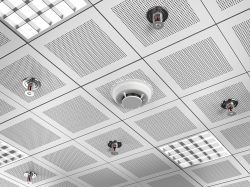Top 5 Techniques Used In Professional Fire Sprinkler Inspection
Fire suppression systems play a crucial role in safeguarding properties and lives from the devastating impact of fires. Regular inspections and maintenance of these systems are paramount to ensure their functionality when needed most. Professional inspectors use techniques that comply with industry standards to guarantee the overall safety and reliability of these life-saving systems. This post explores the top five techniques utilized by safety experts during fire sprinkler inspection.
Visual Inspection
Visual inspection is a fundamental technique that we use when inspecting fire sprinklers. The process involves a meticulous assessment of the entire sprinkling system. Our trained professionals carefully examine each component, from the pipes and fittings to the sprinkling heads and control valves. They look for signs of physical damage, corrosion, leaks, and any potential obstructions that could hinder the system’s performance. This technique is crucial because even minor issues can have significant implications during an emergency.
Flow Testing
Flow testing is a dynamic technique used to measure the water flow rate and pressure of the sprinklers. This involves opening a designated sprinkling head to simulate the flow of water and gauging the pressure and volume produced. Our technicians use specialized equipment to perform accurate flow tests, comparing the results against established benchmarks. Flow testing verifies whether the system is delivering the required amount of water to suppress fires effectively. Deviations from expected flow rates or pressures can indicate blockages, valve issues, or inadequate water supply.
Alarm Testing
Alarm testing is an essential technique to validate the communication and response capabilities of the sprinkler system. During this phase, our experts trigger the alarm system and observe how quickly the sprinklers respond. They ensure that the alarms are audible and visible and that the control panel receives and displays the appropriate signals. Effective alarm testing goes beyond ensuring compliance as it also instills confidence that occupants will receive timely alerts in case of a fires.
Inspecting Control Valves
Control valves are integral components of fire suppression systems. We confirm their ability to regulate water flow to different sections of the building after every fire Sprinkler installation. Our technicians perform thorough inspections of these valves to ensure their functionality and accessibility. They check for proper labeling, operational status, and any signs of corrosion or damage that could impede their operation. Malfunctioning control valves can disrupt the effectiveness of you entire suppression system.
Hydraulic Calculations and Analysis
Hydraulic calculations are complex computations used to determine the water flow requirements for each section of your system. We analyze factors such as pipe diameter, water pressure, and the number of sprinkler heads. This enables us to establish if the system is designed to deliver adequate water coverage to all areas. The calculations from commercial fire Sprinkler contractors also consider potential variations in water supply, such as fluctuations in pressure during peak demand periods. Accurate hydraulic calculations are critical for proper system design and performance.




